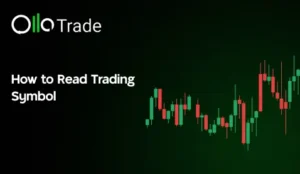In the world of CFDs (contracts for difference), every small detail counts especially the way prices are quoted. You’ve probably come across terms like “4-digit” and “2-digit” quote formats and wondered what the fuss is all about. Understanding these quote digits is a key piece of the puzzle that can help you make smarter trading decisions and avoid costly mistakes.
In this article, we’ll break down the mystery behind CFD quote digits, explain the difference between 4-digit vs. 2-digit formats, and show you why knowing this can give you a real edge in the trading game. So, let’s dive in and make these numbers work for you!
Understanding What is CFD Quote Digits?
Understanding the CFD quote digits are is like getting a peek behind the curtain of how prices are shown in trading. Simply put, CFD quote digits tell you how detailed the price display is for a Contract for Difference (CFD), like looking at a price tag in a store but with different levels of “zoom.” Some show more numbers after the decimal (4 digits) for fine detail, while others show fewer (2 digits) for a simpler view.
The extra digits can make a big difference when you’re buying or selling, especially in fast-moving markets. Knowing how to read these digits helps you catch the small price movements that can mean the difference between a win or a miss. This small information maintains your trade sharp and your decisions informed.
The Difference Between 4-Digit Vs 2-Digit CFD Pricing Formats
When diving into the world of CFD trading, understanding the difference between 4-digit and 2-digit pricing formats can make all the difference between a winning trade and a head-scratcher.
- The 4-digit format is the go-to for most forex pairs. It is like reading a clock with hours, minutes, seconds, and even milliseconds; it offers a finer level of detail, showing prices like 1.2345. This extra precision helps traders catch those tiny price movements that can add up.
- On the flip side, the 2-digit format typically shows up with currency pairs involving the Japanese Yen, such as USD/JPY quoted at 110.25. It is kind of like looking at a clock that only shows hours and minutes, which is simpler and suits the Yen’s market behavior.
Each format finds its home in different markets primarily due to how currencies behave and their standard trading practices. In a nutshell, 4-digit pricing is a comprehensive map, whereas 2-digit pricing is a broad street view. Knowing which one you’re dealing with helps you read CFD quotes like a pro and avoid costly mix-ups.
Why CFD Quote Digits Are Important in Forex and CFD Trading?
Understanding CFD quote digits is like to having a finely tuned compass when trading forex and CFDs. It has a direct impact on your ability to make informed and confident decisions. The digits in a quote show the price with precise detail; more digits mean greater transparency about small price changes, so you know exactly how the market is moving.
This precision affects the spread, the gap between buying and selling prices that means tighter spreads can lower your trading costs. Without grasping this, traders might misread minor fluctuations as big moves, leading to costly mistakes. So, knowing how to read these digits properly helps you avoid pitfalls, manage risks better, and ultimately trade smarter, turning what could be a confusing jumble of numbers into actionable insights.
How CFDs Are Quoted in the Real World?
When you step into the real world of CFD trading, it’s a lot like watching the tickers on popular indices like the S&P 500 or commodities like gold. Imagine you’re following gold prices quoted as 1925.45 instead of just 1925 that extra digit shows the price moving in smaller, more precise steps. This little detail matters because it helps traders spot tiny shifts in the market that can add up to real profits (or losses).
So, instead of getting bogged down in a sea of numbers, think of it as having a magnifying glass to see clearer details of price movements. Next time you glance at a CFD quote and notice that extra digit, you’ll know it’s there to give you a sharper, more accurate picture of the market’s heartbeat. So next time you see that extra digit, you’ll know why it’s there.
Practical Tips for Traders: Interpreting CFD Quote Digits Correctly
When it comes to interpreting CFD quote digits correctly, traders need to keep their eyes peeled for a few common pitfalls.
- One big trap is getting spooked by minor digit fluctuations that aren’t actually meaningful price moves. The key is to focus on the bigger picture: true price changes usually show consistent movement, not just flickers in the last decimal places.
- When setting stop-loss or take-profit orders, it’s like tuning a finely calibrated instrument. You’ve got to consider how the quote digits affect your risk and potential returns. For example, tighter quote digits mean you can place orders with better precision, but beware of overreacting to tiny shifts that might just be market “static.”
Mastering this balance will help you trade smarter, avoid costly mistakes, and keep your strategy humming along smoothly. In a nutshell, think of interpreting quote digits like reading a clock, not every tick is a new hour, but keeping track of time properly gets you where you want to go.
Conclusion
CFD quote digits aren’t just numbers on a screen — they’re the fine print of market movement. Whether it’s a 4-digit view for pinpoint precision or a 2-digit snapshot for a simpler read, knowing the difference gives you clarity, control, and confidence. The more you understand these tiny details, the better you can spot opportunities and steer clear of unnecessary risks.
Start your CFDs trading journey with Olla Trade Ltd to get benefits like clearer quotes, sharper decisions, and stronger results because every digit counts.









